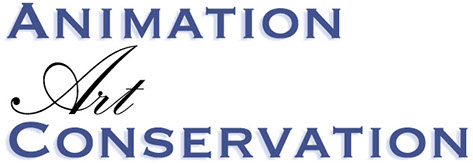
COPYRIGHTS AND RESTRICTIONS AND CONDITIONS OF THIS WEBSITE
Pre-Columbian art inspires the look of Disney’s 39th animated feature.
Ancient art and a ten day trip to Peru served as inspiration for the artists working on Disney’s 39th animated feature The Emperor’s New Groove. Set in a mythical land, the look of the film is drawn from the arched lines and caricatured motifs found in Pre-Columbian art.
“We wanted to come up with a fantasy place that people haven’t seen before, not historical in any way” stated English-born art director Colin Stimpson. “A group of us went to Machu Picchu, the lost city of the Incas, studied their artwork and used it as a springboard. A lot of Incan design really lends itself to animation. Their textiles have quirky little animals throughout as a motif. We also looked closely at the gold statues the Incas made, took one of those designs and used it for inspiration for the design of the facade of the palace. We looked at small sculptures, blew them up and used them out of context. For example, the design of the throne came from an Incan mask.”
Films from Disney’s past, such as Peter Pan and Lady And The Tramp, also had an influential role. Producer Randy Fullmer explains, “We realized that those films were lit very much like a stage play. It’s really clear at all times where your eye should go on the screen. We wanted to direct the viewer’s eye by using bold, simple values and pools of light to emphasize characters and reinforce the mood.”
Artists combined the influence of vintage Disney backgrounds and merged with the arched lines and deep angles found in Incan art. The effect could be felt in the interior designs of the palace and exterior landscapes as well. Director Mark Dindal explains, “In the jungle world, they use a lot of curves that don’t exist. The earth does not really make that kind of swoop, but it is believable and more fun than a literal hillside. That is something we saw in the background art from Peter Pan and Cinderella.”
A background painting depicting the mythical South American mountain kingdom
and the village below in Disney's feature film The Emperor's New Groove.
Facial designs from an Incan Mask served as inspiration for Kuzco’s foreboding throne room.
This character model sheet of Kuzco drawn by Nik Ranieri from designs by Joe Moshier
uses elongated triangular shapes and semi-circles found in ancient art as a substructure
for the design of the character’s head and torso.
All images are © Disney Enterprises Inc.
The author would like to thank Howard Green, Ray Morton and Dave Koch for their help.
This article and interview is owned by © Ron Barbagallo.
ALL RIGHTS RESERVED. You may not quote or copy from this article without written permission.
YOUR USE OF THIS WEBSITE IMPLIES YOU HAVE READ AND AGREE TO THE "COPYRIGHT AND RESTRICTIONS/TERMS AND CONDITIONS" OF THIS WEBSITE DETAILED IN THE LINK BELOW:
LEGAL COPYRIGHTS AND RESTRICTIONS / TERMS AND CONDITIONS OF USE
INSTRUCTIONS ON HOW TO QUOTE FROM THE WRITING ON THIS WEBSITE CAN BE FOUND AT THIS LINK.
PLEASE DO NOT COPY THE JPEGS IN ANY FORM OR COPY ANY LINKS TO MY HOST PROVIDER. ANY THEFTS OF ART DETECTED VIA MY HOST PROVIDER WILL BE REPORTED TO THE WALT DISNEY COMPANY, WARNER BROS. OR OTHER LICENSING DEPARTMENTS.
ARTICLES ON AESTHETICS IN ANIMATION
BY RON BARBAGALLO:
The Art of Making Pixar's Ratatouille is revealed by way of an introductory article followed by interviews with production designer Harley Jessup, director of photography/lighting Sharon Calahan and the film's writer/director Brad Bird.
Design with a Purpose, an interview with Ralph Eggleston uses production art from Wall-E to illustrate the production design of Pixar's cautionary tale of a robot on a futuristic Earth.
Shedding Light on the Little Matchgirl traces the path director Roger Allers and the Disney Studio took in adapting the Hans Christian Andersen story to animation.
The Destiny of Dalí's Destino, in 1946, Walt Disney invited Salvador Dalí to create an animated short based upon his surrealist art. This writing illustrates how this short got started and tells the story of the film's aesthetic.
A Blade Of Grass is a tour through the aesthetics of 2D background painting at the Disney Studio from 1928 through 1942.
Lorenzo, director / production designer Mike Gabriel created a visual tour de force in this Academy Award® nominated Disney short. This article chronicles how the short was made and includes an interview with Mike Gabriel.
Tim Burton's Corpse Bride, an interview with Graham G. Maiden's narrates the process involved with taking Tim Burton's concept art and translating Tim's sketches and paintings into fully articulated stop motion puppets.
Wallace & Gromit: The Curse Of The Were-Rabbit, in an interview exclusive to this web site, Nick Park speaks about his influences, on how he uses drawing to tell a story and tells us what it was like to bring Wallace and Gromit to the big screen.
For a complete list of PUBLISHED WORK AND WRITINGS by Ron Barbagallo,
click on the link above and scroll down.
DESIGNING THE EMPEROR'S NEW GROOVE
© 2000 Ron Barbagallo
Angular geometrics which accented ceramic art from the Moche tribe as well as African tribal masks and Oceanic artwork found their way, via embellished details, into the film’s character designs. Joe Moshier, who served as the film’s character design artist stated “My main focus was making sure the shapes spoke clearly because when people respond to a character, you are noticing the shapes and the gesturing. Then I would take some of the shapes from familiar icons and insert them into some of the patterns. I didn’t want to affect the anatomy too much because I didn’t want it to seem forced. I did it in small touches here and there, like in the step above the first knuckle that describes the knuckles of Kuzco, Kronk and Pacha’s hands.”
With a story that focuses on humor and the interplay of its four main characters, the geometric visuals behind The Emperor’s New Groove borrow from kingdoms of the past to decorate a lighthearted modern comedy.
The Emperor's New Groove opened theatrically on December 15, 2000.
Circles, triangles and grids found in ancient art permeate the designs of The Emperor's New Groove.
The facade of Kuzco’s palace owed its design to elements taken from gold Incan statues.

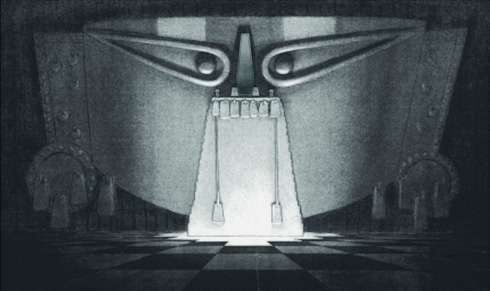
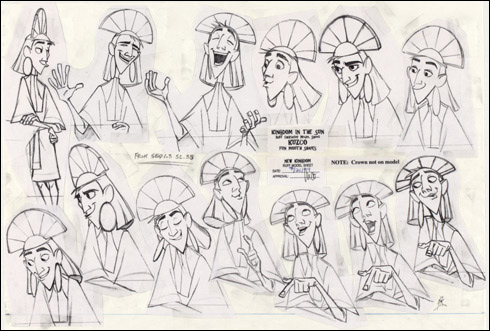
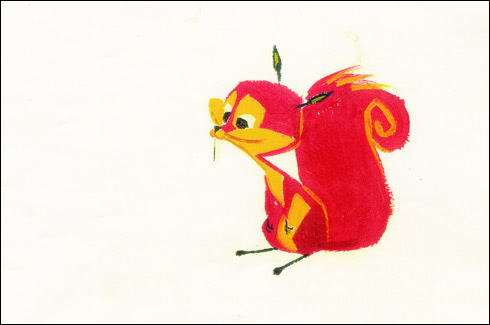
A conceptual painting of Bucky by Joe Moshier.
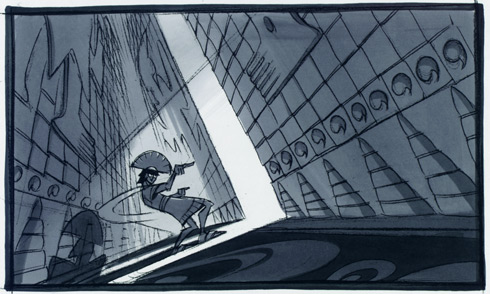
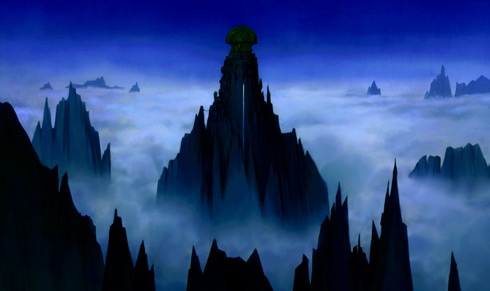
The Ethical Method of Repair
The Attention is in the Details
the Lost and FOUND series
RON BARBAGALLO: